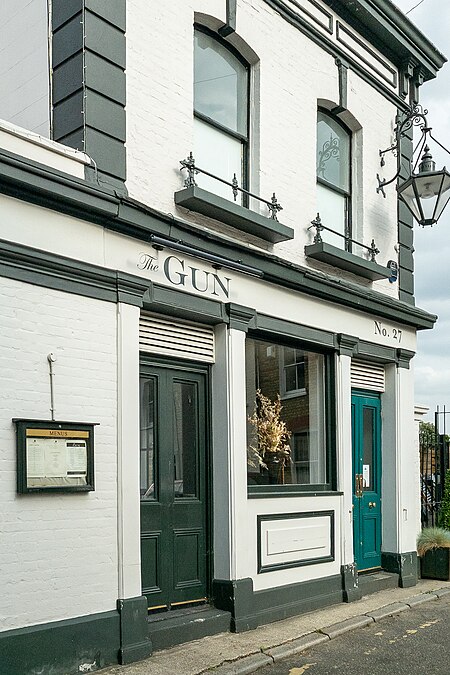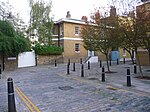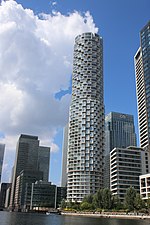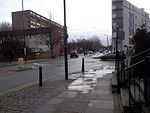The Gun, Coldharbour
18th-century architecture in the United KingdomGrade II listed buildings in the London Borough of Tower HamletsGrade II listed pubs in LondonPub stubsUse British English from May 2014

The Gun is a Grade II listed public house at 27 Coldharbour, Coldharbour, London. It takes its name from the cannon which was fired when the West India Docks first opened in 1802.
Excerpt from the Wikipedia article The Gun, Coldharbour (License: CC BY-SA 3.0, Authors, Images).The Gun, Coldharbour
Cold Harbour, London Blackwall
Geographical coordinates (GPS) Address External links Nearby Places Show on map
Geographical coordinates (GPS)
| Latitude | Longitude |
|---|---|
| N 51.50178 ° | E -0.00774 ° |
Address
The Gun
Cold Harbour 27
E14 9NS London, Blackwall
England, United Kingdom
Open on Google Maps










